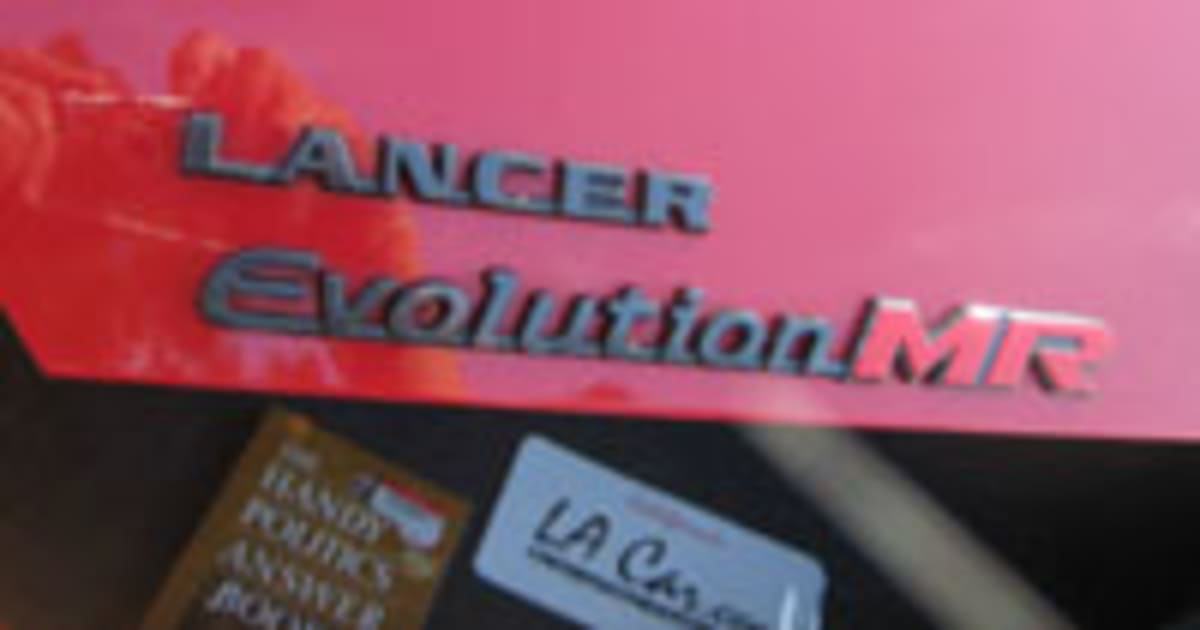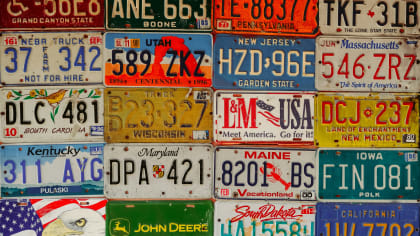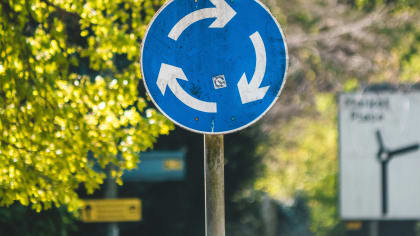BACK SEAT DRIVING - FEBRUARY 2007
This article is from our archives and has not been updated and integrated with our "new" site yet... Even so, it's still awesome - so keep reading!
Published on Wed, Jan 31, 2007
By: The LACar Editorial Staff
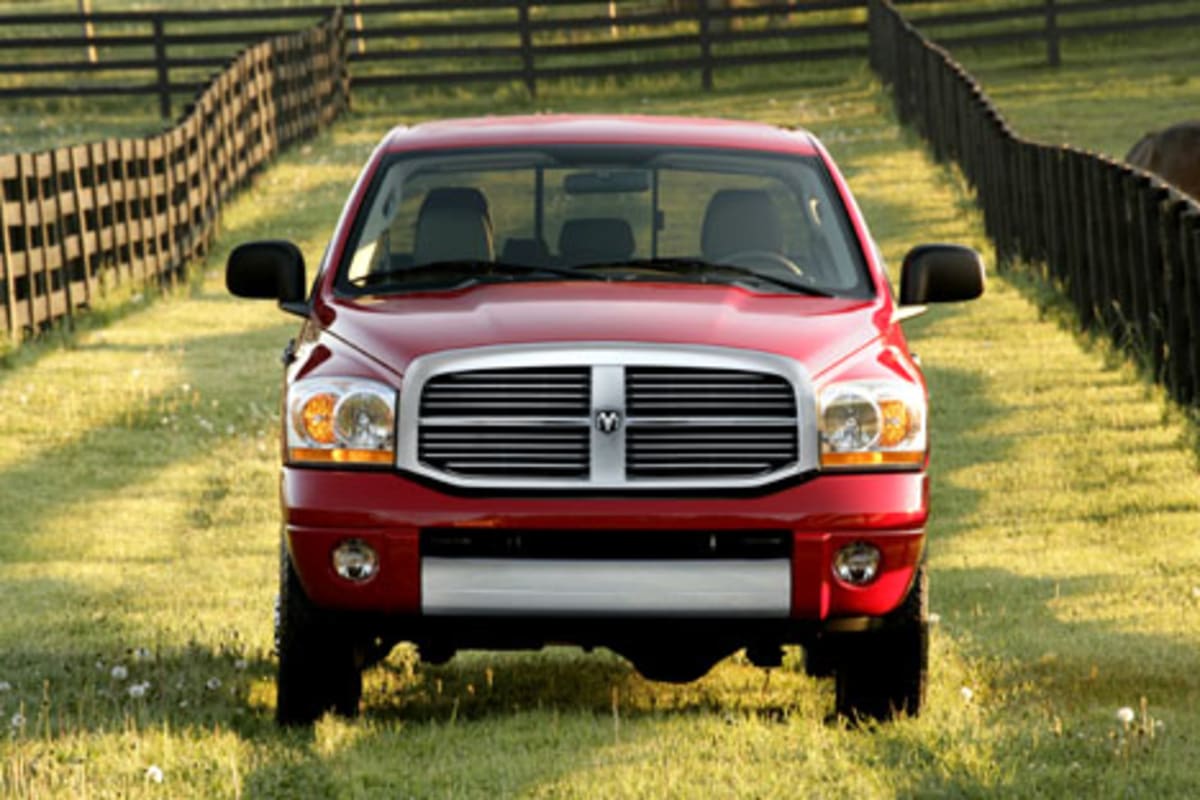
BT JUSTICE
February 25, 2007
If you think things are tough at Ford and GM, it appears that adversity is an
equal opportunity player when it comes to the domestic automotive front.
Chrysler, the third leg of the Big Three automakers, has taken a substantial and
sustained hit in profitability. Parent company DaimlerChrysler has made it no
secret that they're open to entertaining offers for its Chrysler division.
There's a lot of media talk about General Motors buying Chrysler, but GM needs
Chrysler like it needs a hole in the head. GM has a hard enough time finding
buyers for its existing line and dealership network. The cynical view is that GM
is only interested in buying Chrysler so that it can shut it down and increase
its market share. But that will benefit all the car companies, and why should GM
foot the bill for that move?
Let's explore some other options. A strategy that can possibly make Chrysler
viable is the same strategy being used by buyers of auto suppliers:
All right. So much that that fantasy scenario. If not that, then what? How about Arnold? The Governator has been trying for years to lure automotive jobs to California. But where will the money come from? Managing Editor Bill Wright has a suggestion: "He can ask Toyota to lend the money. Arnold's talks with Toyota to build hybrids in this state haven't yet panned out, and Toyota probably feels a little sorry about that. So instead, they can lend the state money to buy Chrysler, thereby avoiding the unseemly prospect of one of the Big Three going under. Such a prospect will be impolitic as all get out." Okay, maybe here's a more likely prospect: A Pacific overture - namely, from China. The Chinese automakers very much want to break into the U.S. auto market. DaimlerChrysler has already been in talks with one of the Chinese automakers to bring some cars here. A purchase of Chrysler will allow a Chinese company to utilize an established dealer network. On the other hand, China did try to purchase Chevron a short while ago, but withdrew after the political kitchen got too hot. Alas, the same might happen with an attempted purchase of Chrysler. "LA Car should buy Chrysler," says Wright. "But we shouldn't make a bid unless it can get union, supplier and lender concessions. Even then, $5 billion might be too much. Ask Dr. Z to give LA Car the company and pay $5 billion. The increase in the stock price of the new Daimler will easily cover it." "Only problem is, who will we send to Auburn Hills?," asks our managing editor. "I ain't going, 'cause I'm gonna freeze my tail off there," says Wright, who is currently spending time in Sweden. Your Back Seat Driving comments can be sent to: Letter to the Editor
ROY NAKANO HOW XM AND SIRIUS CAN BEAT THE MONOPOLY RAP February 20, 2007 Yesterday, in Washington DC, XM Radio and Sirius Satellite Radio announced an intent to merge into one satellite radio company. "The merger will create a satellite radio company that will provide consumers across the country with more and better premium radio programming," proclaimed XM Radio CEO Hugh Panero. "The combined company will be able to compete better in what has become a very complex and dynamic entertainment market. The new company will seek to ensure that in the future, listeners will be able to access both companies' programming." Panero says those with factory-installed satellite radio will no longer be limited to the programming provided by the exclusive satellite radio service chosen by the car manufacturer. The companies hope that the merger will be completed in late 2007 or early in 2008. There is a major roadblock up ahead, however. Federal Communications Commission Chairman Kevin Martin immediately issued a statement saying that XM and Sirius "would need to demonstrate that consumers would clearly be better off with both more choice and affordable prices." Thus, the big M word emerges: Monopoly. FCC Chairman Martin suggests that a merger will create a monopoly in the world of satellite radio. And monopoly means that the merger will not meet FCC approval. Such a view is myopic. The reality is that both of these satellite radio companies are struggling against the broader competition - namely, non-subscription digital audio broadcasting, iPods and other forms of MP3 players. And therein lies the key to beating the monopoly rap. XM and Sirius' competition is not confined to the subscription satellite radio world. The fact is, subscription satellite radio is a very small player in the personal audio entertainment world, and its future is not all that secure. The merger will, if anything, strengthen its future and assure stronger competition in the audio entertainment community. Assuming that the merged company will keep its prices down (to compete with free entertainment) and programming broad, consumers will be better off with a merged satellite radio company. Your Back Seat Driving comments can be sent to: Letter to the Editor
JOHN GRAFMAN ART CENTER'S SUMMIT ON SUSTAINABILITY February 16, 2007 Art Center College of Design in Pasadena raises the bar yet again. Hosting a multi-day summit on sustainability, the 75-year-old institution pulls in respected big names inside and outside of the auto industry to address concerns looming on the horizon. The diverse group of speakers are here to educate, but all of the distinguished participants are here to come together in a common concern. After all, the question isn't whether many materials we use in transportation production will run out, but when. The keynote speaker on this energized Wednesday night is Robert F. Kennedy Jr., preaching to a packed auditorium, Kennedy drives home his point time-after-time - we need to do more if we are to preserve not just nature, but life as we know it. The message is clear: You don't need to preserve nature for the spotted owl, or some vanishing species of frog, do it for us - mankind. In the short term, business often sees this as an additional cost in order to be more environmentally friendly - but in reality the benefit is actually a cost saving. Kennedy did attempt to shine more light on the effort, or lack thereof by both the elected officials and media, and he is correct to one extent or another. Oddly, he isn't placing the responsibility on the populous. We, the people. It isn't the just the responsibility of either the government or the media to do the right thing, it's the responsibility of all of us. While the singular individual effort doesn't appear to make a dent in the big picture, multiply that effort by several hundred million people and the effect can be staggering. Actor and environmentally friendly guy Ed Begley Jr. gives the introduction to the keynote. His brief speech sounds apolitical and driven by his concerns and real life experiences. He doesn't just talk the talk, but he walks the walk - literally. Here is a man who does whatever it takes, but he doesn't waiver on his commitment to being earth-friendly. In place of taking a plane, he takes his less polluting auto, and in place of his green cars, he takes a bicycle instead. His message is one we can appreciate. He asks us to do what we can. Maybe you can't afford to install solar heaters on the roof of the house, but perhaps replacing the light bulbs the next time around with low consumption bulbs is within your budget. Every little bit counts. Sustainability is the art and science of understanding the need to create without creating waste. And creating a balance - not taking more from the world around you than you give back. The big name speakers pack the house, but it's the President of Art Center College of Design that makes the news. The school will be approaching sustainability head on. Surprisingly there will be no classes in sustainability at the school. Instead, sustainability will be integrated into each and every course taught at the school, just as business is part of the education. If you create it, you need to understand the business associated with the endeavor, and now it is sustainability that needs to be addressed in the same fashion. This is a long-term goal, creating a new student, a new graduate, and in time a new world. We might just be able to save the world after all, and we will have the will power and vision of those here to thank. The next time you look at a new car, look at it through eyes that can see further down the road. You might just be surprised at what you see! Epilogue: LA Car gets the picture. No longer is the MPG ratings found at the end of our auto reviews. The all important fuel economy numbers will follow the price and engine type. Another small step for LA Car doing its share to save the globe. Save a tree. Go paperless - read online! Find out more on this at www.artcenter.edu/summit/ Your Back Seat Driving comments can be sent to: Letter to the Editor
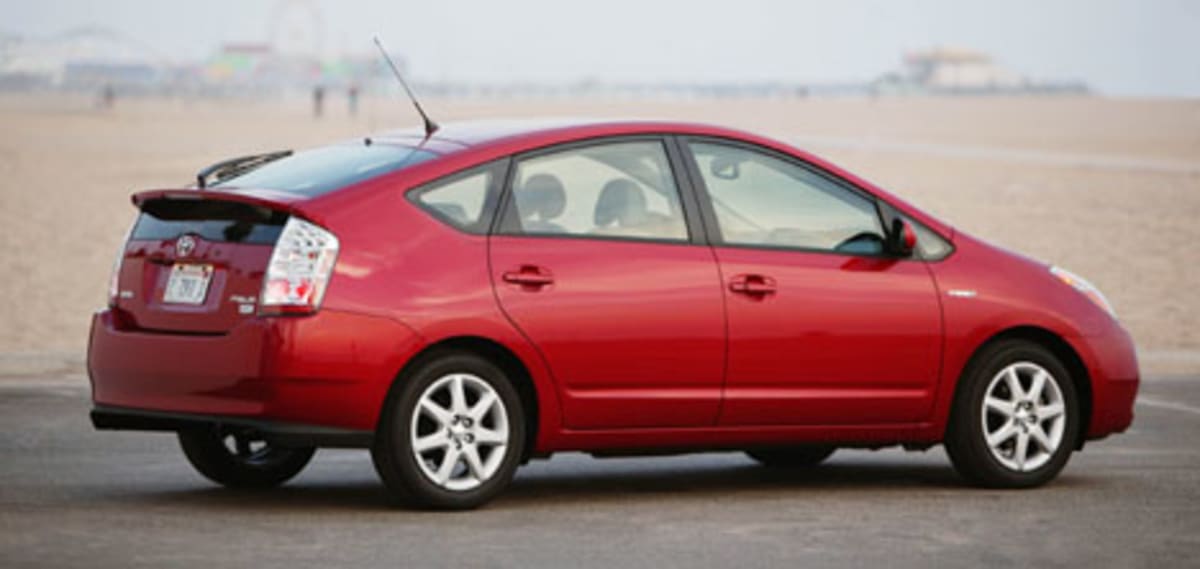
Too quiet? ROY NAKANO: BACK SEAT DRIVING HYBRID CARS DANGEROUSLY QUIET, SAYS NFB February 13, 2007 I never thought a car can be too quiet, but the National Federal of the Blind (NFB) evidently thinks so. The NFB is warning that cars with hybrid engines using electricity and fuel are dangerously too quiet for pedestrians. The group's spokesman John Pare told AFP, "the NFB does not want to add to noise pollution, but hybrid cars should not be less noisy than other cars." The NFB has now come out and stated that hybrid cars pose a risk to the blind, children, the elderly, cyclists and distracted pedestrians. The group said it conducted tests with blind people. "We had the car drive by in different situations, to see whether or not people could hear it and use the sound of the car to safely cross the street, and they could not. The car was just silent," Pare told AFP. Chris Danielsen, a 36-year-old NFB member, told AFP that up to 30 people took part in tests on a side street and in an alleyway with a Toyota Prius and a Honda Civic. "We all stood on the side of the street and the idea was to raise your hand as you heard the car approach," Danielsen said. "We generally couldn't sense that it was there right in front of us, which of course, if we had been standing in the road, would have been running right over us," he said. "By the time anybody detected it, if we had actually been standing in the road, it would have taken out three or four people." Barbara Pries, a member of NFB's pedestrian security committee, said no blind person has been killed by a hybrid car but some have reported having near accidents. "It's just a matter of time before people are going to get injured and killed," she told AFP. The NFB says it contacted Toyota, Honda and Ford in vain to ask that a noise or signal could be added to their hybrids. Toyota representatives told AFP that there are no current plans to change its hybrid but that it is looking into improving pedestrian safety. "We are aware of this issue and studying a way to improve pedestrian safety. It's important that the solution doesn't add to noise pollution but is good for pedestrians," said Toyota spokeswoman Martha Voss. Another Toyota spokesman, Xavier Dominici, told AFP that the trend was toward quieter cars and that people should start getting used to them. Dominici does have a point. A substantial part of the problem is that the surrounding, non-hybrid vehicles in everyday traffic are so noisy. As vehicles in general become quieter, the problem should be mitigated. The current model of the Toyota Prius does have a beeping signal that sounds when the car is in reverse. However, the sound emanates from the car's interior, making it more of a warning to the driver about the car's quietness than it is a warning to pedestrians that may be in the car's path. The beeping sound can be disengaged, and many Prius owners who find the noise annoying have done just that. Your Back Seat Driving comments can be sent to: Letter to the Editor
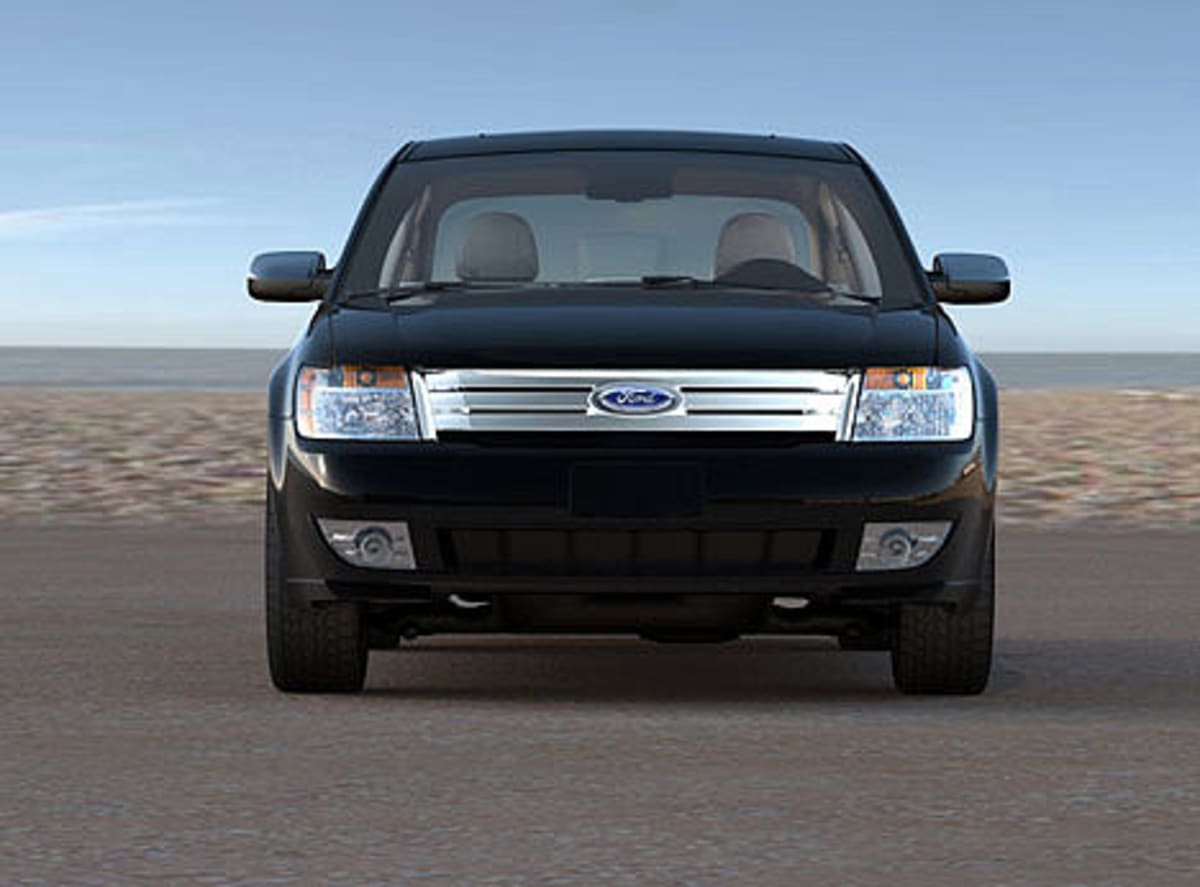
ROY NAKANO: BACK SEAT DRIVING RETURN OF THE TAURUS February 6, 2007 First, it was Volkswagen bringing back the Rabbit name for its newest Golf. Now, the Associated Press reports that Ford will bring back the Taurus name for its updated 2008 Five Hundred. Two company officials told AP's Tom Krisher that Ford will rename its slow-selling Five Hundred model the Taurus, a name Ford previously had used for a car that became the nation's top-seller. The officials evidently spoke on the condition they not be identified by name because the official announcement had not yet been made. Krisher says the announcement is expected to be made Wednesday at the Chicago Auto Show. The Taurus, you may recall, is the car that saved Ford back in the 1980s. Accordingly, it carries a lot more sentimental value than "Five Hundred." Ford had just recently ceased production of the jellybean-like Taurus after 21 years. It turns out that Alan Mulally, Ford's new CEO, helped revolutionize product development at Boeing in part by taking inspiration from the broad, team-based approach Ford used to create the Taurus in the 1980s. Says Krisher, "Mulally, who in the 1990s managed development of Boeing's enormously successful 777, applied the Taurus ideas to that project." Your Back Seat Driving comments can be sent to: Letter to the Editor
ROY NAKANO: BACK SEAT DRIVING
THE THRILL IS GONE (WELL, MAYBE NOT)
February 3, 2007
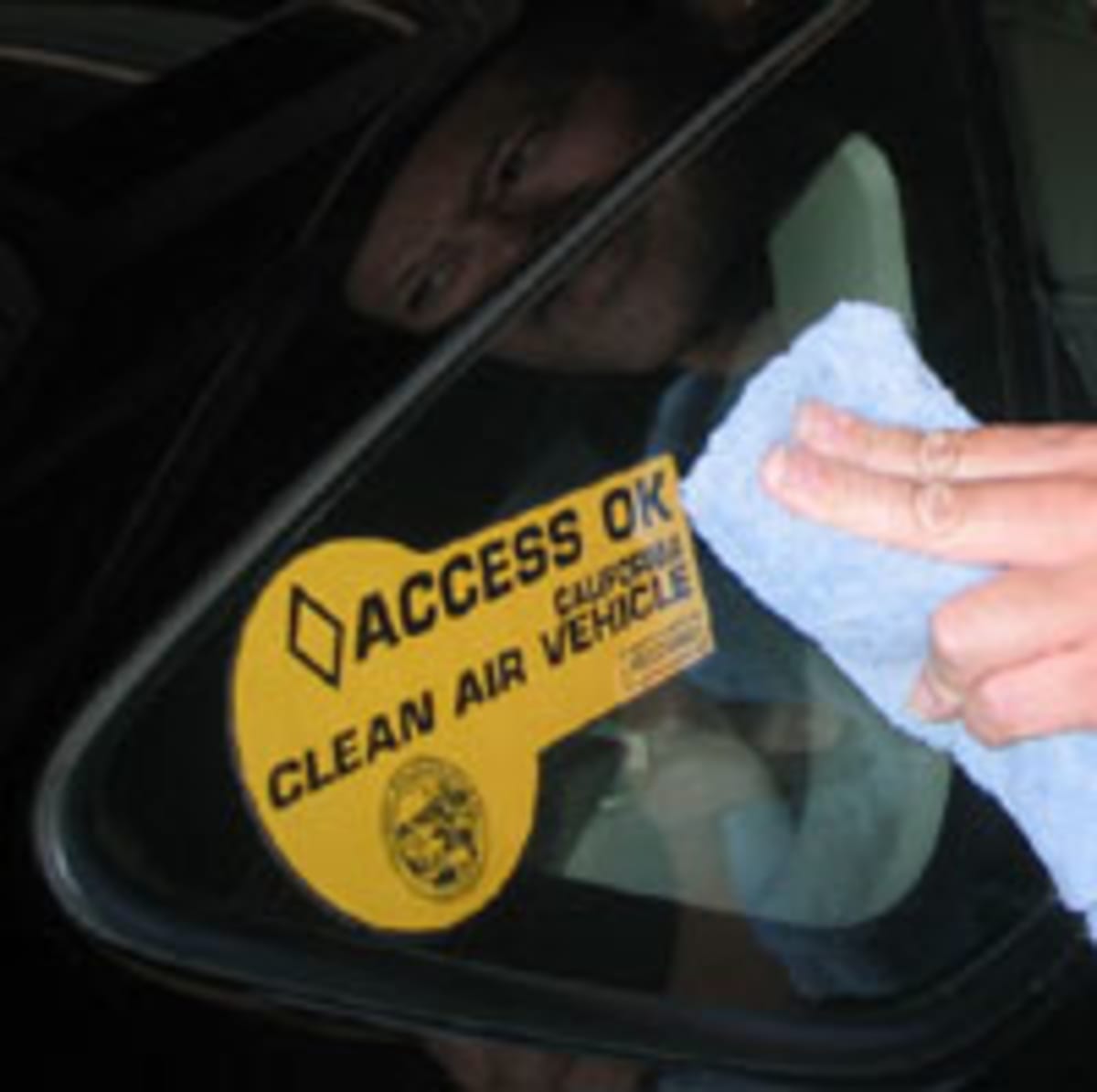
They're gone. The total allotment of 85,000 single-occupancy hybrid carpool stickers issued by the State of California are gone. If you're one of the lucky 85,000 with the hybrid stickers, your car is probably more valuable that equivalent hybrid owners in the state without the stickers. Nothing is showing up on the horizon in the way of more stickers. If you want single-occupant access to the carpool lanes, there's only one car that will get you there, the compressed natural gas-powered Honda Civic GX. Consumers who purchase a natural gas-powered vehicle continue to be eligible for single-occupant use of High Occupancy Vehicle (HOVs) lanes in California. And Honda wasted no time to let consumers know. "The 2007 Honda Civic GX is the only new vehicle that is eligible for consumers to register for single occupant HOV permits (AB 2628), now that the maximum number of 85,000 hybrid vehicle HOV permits have been issued,." said John Mendel, senior vice president of American Honda Motor Company, Inc. "The single-occupant HOV permits reward consumers who purchase vehicles that achieve the highest levels of environmental performance," said Mendel. "Honda continues to be a leader in producing vehicles that set the standard for low emissions and fuel economy." New Honda Civic GX buyers may also be eligible for a $4,000 federal tax credit when they file their tax return for the year in which the vehicle was purchased. Additionally, buyers of the natural gas vehicle home refueling appliance "Phill" are also eligible for up to a $1,000 tax credit. Phill allows consumers to refuel a natural gas-powered Civic GX from their home at a much lower fuel cost than gasoline. Honda is currently the only manufacturer to market a natural gas passenger car to fleet operators nationwide and directly to consumers in the states of California and New York. The home refueling appliance "Phill" can also be leased in conjunction with the natural gas-powered Civic GX at certain California and New York Honda dealers. Consumers seeking stickers should refer to the California Air Resources Board's website www.arb.ca.gov for further information. Your Back Seat Driving comments can be sent to: Letter to the Editor
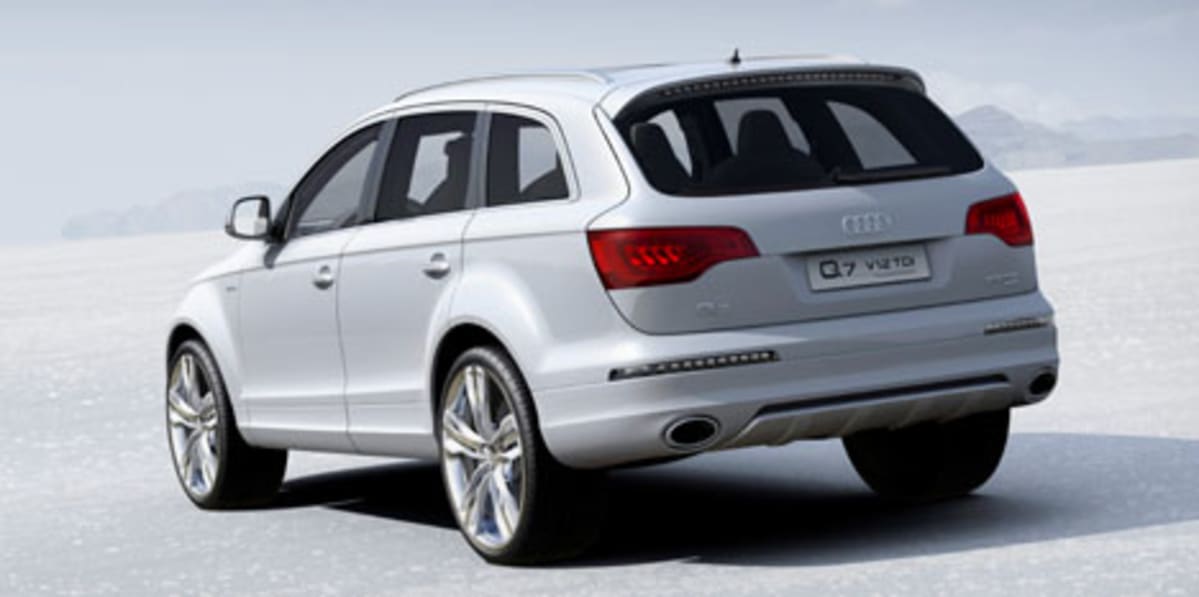
Audi's 500 hp Q7 V12 TDI diesel concept ROY NAKANO: BACK SEAT DRIVING DIESEL FOR $1 A GALLON February 1, 2007 That's right. Diesel for $1 a gallon. And not from oil. Instead, it'll come from sewer sludge, wood, agricultural waste, plain old trash or even plastics. That's the promise of a new process unveiled at UC Riverside by researchers and a small company that will pay $15 million for a pilot plant to be built in the next two years, reports Andrew Silva of the San Bernardino Sun. "One of the advantages of this is we will reduce the need for imported oil," said Joseph Norbeck, a professor of engineering at UC Riverside's Bourns College of Engineering-Center for Environmental Research and Technology, also known as CE-CERT. "Researchers have come up with a new way of taking just about any product with carbon in it, from coal to PVC pipe to nylon, and converting it into a gas and then turning that gas into high-quality diesel," says Silva. "The process of turning solids into gas has been around for centuries. Gas lights in 18th century London were powered by gas derived from coal. South Africa got most of its fuel from gasification projects when other nations wouldn't sell it oil during the apartheid era. But those processes are messy and require a lot of energy." "Many of the old gasification plants are now Superfund sites," says Neal Richter, a scientist who spent decades with Texaco and is now a technical adviser for Viresco Energy, the Riverside-based company that will bankroll the plant. Viresco asserts that two-thirds of the process uses tried-and-true, off-the-shelf technology. What's new is how the company can turn solids into a gas, and how efficient that new technique is. "A process that normally takes an hour can be done in six minutes, or 10-times faster," asserts Norbeck. "We don't know why it happens. We can convert this faster than anyone has ever seen." According to Silva's report, there's little waste involved. "Up to 85 percent of the feed material becomes useable liquid fuel at the other end." The pilot plant will be built at the CE-CERT campus on Columbia Avenue and the anticipation is that it will be able to convert 10 tons of waste per day into fuel. Construction is expected to be complete by mid-2008. "Viresco Energy is already talking with the city of Riverside about building a 400 ton-per-day plant near the city's sewage-treatment facility, where sewer sludge can be turned to fuel," Jim Guthrie, president of Viresco, said to Silva. "If it works, plants could be established all over the country to help cities deal with sewer sludge and municipal waste, all while creating high-quality, inexpensive fuel." Your Back Seat Driving comments can be sent to: Letter to the Editor
A
JOURNAL OF LOS ANGELES & ITS CAR CULTURE That
was LA Car's subtitle when it started back in 1997. Since then, La Car
became LA Car. Its subtitle became
Reporting From Car Culture Ground Zero, then From The Heart of Car
Culture, to today's The Cars and Culture of Southern California. At
all times, however, we aimed to chronicle the Southland's spirit - much like
one's own
journal or diary.
Now, the diary section goes daily. LA Car has always been a great source
to come back to from week-to-week, to see what articles and reviews have been
added to our rather staggering database. With Back Seat Driving, a.k.a.
BSD (note the similarity to two well-worn abbreviations, BS and BFD) and Live
Wires - Hot & Tender News From the Car Culture (co-located with Back Seat
Driving, and updated at least daily), we give you a reason to
come back more often (all opinions, by the way, are those of the respective
author).
So, go
ahead and bookmark www.lacar.com. We'll be
sure to always provide a link to Live Wires and the latest Back Seat
Driving blog entry. In the meantime, welcome to the journal and journey into
the cars and culture of Southern California. - Roy Nakano For
past Blog entries, click the following:
January 2007
December 2006
November 2006
October 2006
September 2006
August 2006
July 2006
June 2006
May 2006
April 2006
March 2006
February 2006
January 2006
December 2005
November 2005
October 2005
September 2005
August 2005
July 2005
June 2005
May 2005
April 2005
March 2005
February 2005
January 2005
December 2004
November 2004
October 2004
September 2004
August 2004
July 2004
June 2004
May 2004
April 2004
